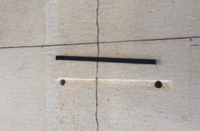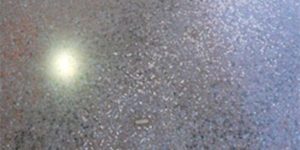The article, “Treating Concrete with Densifiers Increases Compressive and Tensile Strength”, by Susan Brimo-Cox, is informative and brings to your audience useful information on the fastest-growing treatment for concrete flooring.
The ASTM Committee C09.22 Materials Applied to New Concrete Surfaces has a task group developing a specification for densifiers chaired by Mike Morrison of CTL Laboratories.
I would like to take this opportunity to expand on a few technical points in the article that require clarification.
- Concrete treated with densifiers has increased resistance to mineral acids, i.e., muriatic, sulfuric.
- The densifed concrete is still affected by organic acids such as vinegar, citric acid (oranges, tomatoes) lactic acid, milk products, wine and most other food acids, causing white stain or deterioration.
- Densifiers will greatly reduce wear and dusting, but not completely stop the process.
- A surface treatment at the industry standard application rate of 200 square feet/gallon applies 3.2 grams per square foot of concrete. This amount of material is sufficient to densify the surface if the concrete is tightly trowelled. There is no evidence that it will change or have any effect on the compressive strength of concrete, which measures the ability of the concrete to take a load in compression, or its tensile strength, which measures the parting force in tension — i.e., pulling the concrete against a fixed point until it yields (breaks).
- Concrete will naturally continue to increase compressive strength as it cures until it reaches its mix design criteria regardless of densifier usage.
- There is no evidence that densifiers prevent the ravages of freeze/thawing and it is not a substitute for air entrainment or other methods of providing increased durability in outside environments.
- New concrete that is properly cured and cleaned does not require any special preparation. Other new concrete may have laitance and other materials on the surface that will require removal so that densifiers will have the pores of the concrete opened and accessible calcium hydroxide available to perform their function.
- Densifiers do not cure concrete, and if applied at the time of curing, require a curing method such as blankets, plastic films, film-forming membranes or fogging to cure the concrete so they don’t cause surface problems in the concrete slab.
- When applying topping over a densified surface, it is always recommended to utilize a bonding agent, since densified concrete is in part concrete and concrete does not adhere well to concrete.
Darryl Manuel, Chairman — ASTM C 09.22 Materials
Applied to New Concrete Surfaces
















